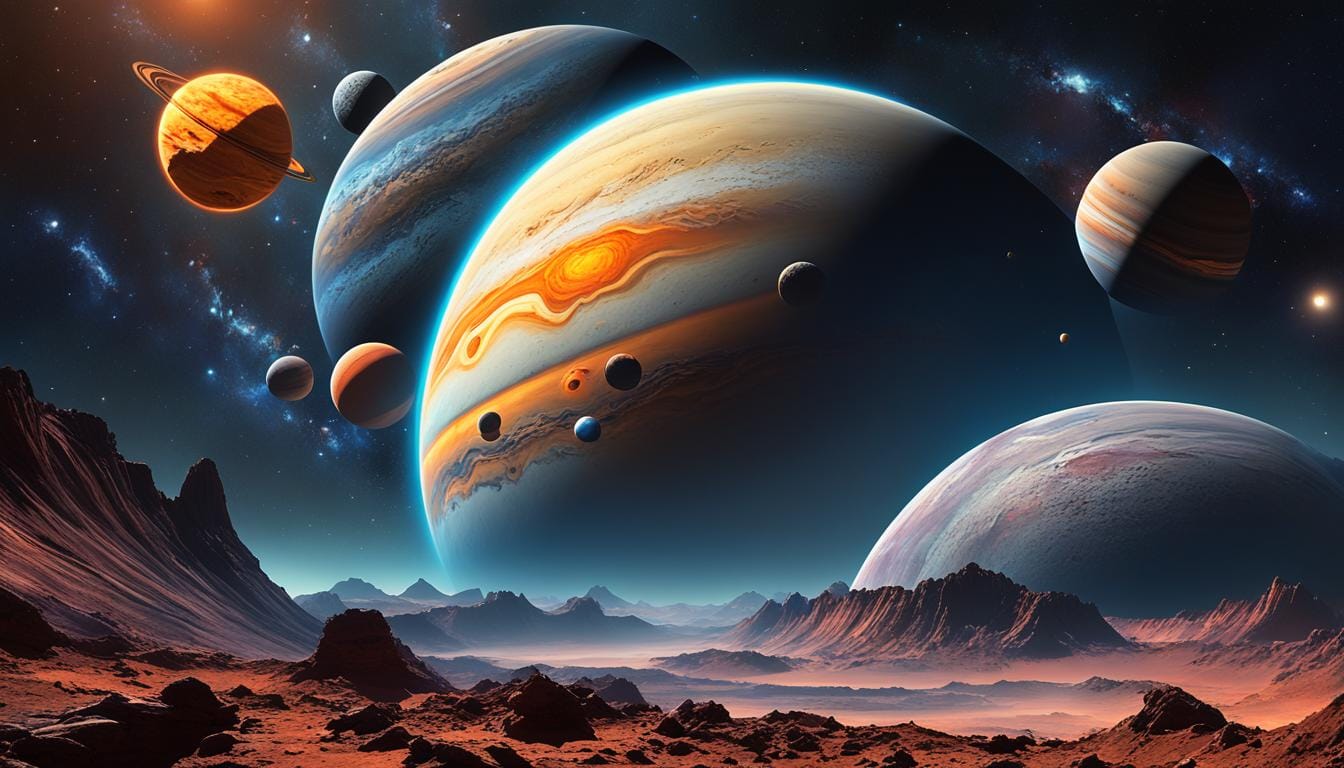Space Mystery: Exploring the Unknown of the Cosmos
Space is full of mysteries. Every time we point a telescope at the stars or send a spacecraft to the distant reaches of our solar system, we discover something new and puzzling. With each discovery, more questions arise, leaving us in awe of the unsolved cosmic puzzles. From the enigma of black holes to the perplexing existence of dark matter, the space mysteries continue to intrigue humanity. Let’s dive into some of the most fascinating space mysteries.
- Space Mystery: Exploring the Unknown of the Cosmos
- What Makes Space So Mysterious?
- The Mysteries of Black Holes
- Dark Matter and Dark Energy
- The Fermi Paradox
- The Great Attractor
- Fast Radio Bursts (FRBs)
- The Multiverse Theory
- The Mystery of Alien Life
- Time Travel in Space
- The Age of the Universe
- The Missing Antimatter
- The Kuiper Belt and Beyond
- Gamma-Ray Bursts
- Conclusion: The Endless Mysteries of Space
- FAQs
What Makes Space So Mysterious?
Space is an endless ocean of the unknown. While we have made remarkable progress in understanding it, vast portions remain unexplored. From galaxies millions of light-years away to the quantum behavior of particles in the vacuum of space, there’s so much we don’t know.
One of the reasons space is so mysterious is its sheer size. With no tangible boundaries, space challenges our understanding of time, distance, and reality itself. The more we explore, the more we realize how little we know.
The Mysteries of Black Holes
What is a Black Hole?
A black hole is one of the most mind-boggling objects in space mysteries. It forms when a massive star collapses in on itself, creating a gravitational pull so strong that not even light can escape. The very idea of something being so dense and powerful it bends space and time is hard to grasp.
Hawking Radiation and Its Implications
In the 1970s, Stephen Hawking proposed that black holes might not be entirely black. He suggested they emit small amounts of radiation, known as Hawking radiation, which could eventually cause them to evaporate. This discovery not only changed how we view black holes but also posed deeper questions about the nature of quantum mechanics.
Black Hole Singularity
At the heart of every black hole is a singularity, a point where gravity becomes infinite, and the laws of physics as we know them break down. The concept of a singularity remains one of the biggest unsolved mysteries in physics.
Dark Matter and Dark Energy
What is Dark Matter?
Dark matter makes up about 85% of the universe’s total matter, yet we cannot see it. It doesn’t interact with light or other forms of electromagnetic radiation, making it invisible. However, its gravitational effects can be observed, especially in how it shapes galaxies.
The Quest to Understand Dark Energy
If dark matter wasn’t enough, we also have dark energy, a mysterious force driving the expansion of the universe. While dark matter pulls things together, dark energy pushes them apart. The discovery of dark energy is relatively recent, and scientists are still working to understand its properties and role in cosmic evolution.
The Fermi Paradox
Are We Alone in the Universe?
The Fermi Paradox poses the question: If the universe is so vast and old, where is everyone? With billions of stars and even more planets, statistically, there should be intelligent life out there. Yet, we have no definitive proof of extraterrestrial civilizations.
Possible Solutions to the Paradox
There are several potential solutions. One is that advanced civilizations may be too far away for us to detect. Another is that intelligent life may be rare or short-lived, wiping itself out before we ever make contact.
The Great Attractor
The Great Attractor is another cosmic mystery. It’s a region of space pulling galaxies, including our own, towards it at incredible speeds. The exact cause remains unknown, though scientists suspect dark matter plays a significant role in this gravitational anomaly.
Fast Radio Bursts (FRBs)
What Are FRBs?
Fast radio bursts are short, intense bursts of radio waves that come from distant galaxies. These events are highly energetic, yet their origins remain unclear. They last only milliseconds but release more energy than our Sun does in a year.
Theories About Their Origins
Some speculate they may be from neutron stars or black holes, while others even consider the possibility of advanced alien technology. Recent discoveries have identified repeating FRBs, adding another layer of complexity to the puzzle.
The Multiverse Theory
What is the Multiverse?
The multiverse theory suggests that our universe may be just one of many. Each universe could have different laws of physics, different forms of matter, and even different timelines. While it’s a speculative idea, it offers a potential explanation for many of the oddities we observe in our own universe.
The Mystery of Alien Life
Evidence of Microbial Life in Our Solar System
While we haven’t found intelligent alien life, there’s evidence suggesting microbial life might exist on other planets or moons. Mars, for instance, has water in the form of ice, and Jupiter’s moon Europa has a vast subsurface ocean, both of which could harbor life.
The Search for Intelligent Extraterrestrial Life
Scientists continue to search for signs of intelligent life through projects like SETI, which scans the cosmos for radio signals that might be of alien origin. Although we haven’t found any signals yet, the search is far from over.
Time Travel in Space
Is Time Travel Possible?
Time travel, as depicted in science fiction, may not be entirely out of reach. Wormholes, theoretical tunnels connecting distant points in space-time, could potentially allow time travel. However, this remains a highly speculative area of physics.
The Age of the Universe
How Old is the Universe?
The universe is approximately 13.8 billion years old, but this figure is based on current models and assumptions. New discoveries could adjust our understanding of the universe’s age.
The Missing Antimatter
What is Antimatter?
Antimatter is the opposite of matter, with particles that have the same mass but opposite charge. When matter and antimatter meet, they annihilate each other, releasing energy. According to current theories, the Big Bang should have produced equal amounts of matter and antimatter, but the universe is dominated by matter. The reason for this imbalance is still unknown.
The Kuiper Belt and Beyond
What Lies at the Edge of Our Solar System?
Beyond Neptune lies the Kuiper Belt, a region filled with icy bodies and dwarf planets. Recently, scientists have speculated about the existence of Planet Nine, a massive, unseen planet that could be lurking in the distant reaches of our solar system.
Gamma-Ray Bursts
Gamma-ray bursts are among the most powerful explosions in the universe. These bursts of energy are thought to occur when massive stars collapse or when neutron stars collide. While they happen far away, a nearby gamma-ray burst could pose a significant threat to Earth.
Conclusion: The Endless Mysteries of Space
As much as we’ve learned, space remains a frontier filled with more questions than answers. The mysteries of the cosmos challenge our understanding of reality and push the boundaries of science. With each discovery, we are reminded of how small we are in the vastness of the universe, yet how much we have to learn.
FAQs
What is the biggest mystery in space?
One of the biggest mysteries is the nature of dark matter and dark energy, which make up most of the universe but remain invisible and poorly understood.
Is time travel possible through space?
While theoretical, time travel might be possible through concepts like wormholes, though we are far from proving or achieving it.
What is the Fermi Paradox?
The Fermi Paradox questions why, given the vastness of the universe, we have not yet encountered evidence of extraterrestrial life.
Could black holes lead to another universe?
Some theories suggest black holes could be portals to other universes, but this remains speculative.
Are we close to finding alien life?
While we’ve found promising evidence of microbial life in our solar system, we are still far from confirming the existence of intelligent extraterrestrial life.


